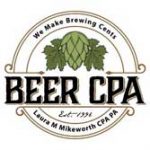Millennials Driving Sales of Distilled Spirits to Surpass Beer For First Time

This year The Distilled Spirits Council of the United States issued its annual economic briefing, which contained a wealth of data on the status of the country’s distilled spirits industry. One of the most interesting data points was the fact that, for the first time, the market share enjoyed by distilled spirits (42.1%) exceeded that of beer (41.9%).
Ascending to the peak of the alcohol sales mountain has been a long slog for producers of distilled spirits. In 2000, distilled spirits share of the market was 28.7%. Beer’s lead, at 55.7%, must have seemed unsurmountable. So what happened? Why have sales of spirits surpassed sales of beer?
The shift from beer to spirits did not occur overnight. It was slow and gradual, which suggests that the 20-plus year time-span over which these changes occurred represents a generational shift in tastes and preferences.
Which generation was responsible for these shifts? Credited with being responsible for the craft beer revolution, millennials have also had a starring role in the growing popularity of spirits.
The first two decades of the twenty-first century can be characterized as the age of the millennial. A millennial is someone born between the years 1981 and 1996.
In 2002, the first members of the millennial generation were reaching the age of 21, that magic milestone where they could legally purchase alcohol. Recently, those first millennials entered their 40s, while the youngest members of the cohort reached their mid-20s. Today, there are an estimated 79 million millennials.
Thankfully, there has been a plethora of market research that provides insights into the values and tastes of millennials. When it comes to food and drink, millennials appreciate convenience, variety, freshness, and healthy. They also value quality over quantity. So how do these preferences influence their alcohol purchasing decisions?
As with craft beer, spirits offer consumers variety. When combined either with other spirits and/or with other ingredients such as bitters and fruit juices, the consumer has a dizzying array of choices. Take Ready-to-Drink cocktails (RTDs), for example. In 2021, Drizly, North America’s largest online alcohol retailer, offered its customers over 450 brands of RTDs, a 170% increase over 2019.
While the more creative among us may take satisfaction from mixing our own cocktails at home, the impressive growth of RTDs offers the ultimate in convenience. No mixing of ingredients necessary—just pop open the can and they are ready to drink. Millennials appear to have embraced them. In 2022, sales of RTDs grew 35.8%. Between 2017 and 2022, spirits enjoyed their fastest growth in decades. RTDs were a primary driver of this growth.
However, it is more than convenience and variety that is attracting millennial drinkers. Once saddled with a reputation for being overly sweet and made with cheap ingredients, the makers of RTDs have upped their game in recent years, using high quality spirits and other ingredients that are often organic and gluten-free. In other words, they have underwent a process known as premiumization. Moreover, millennials, more than any other demographic cohort, are purchasing these higher quality RTDs. According to Drizly, 62% of RTD purchasers are millennials.
While beer is traditionally a male drink, RTDs have a broader appeal. Sixty percent of Drizly’s RTD customers are female. Appealing to both males and females undoubtedly gives RTDs an advantage over beer.
In addition to RTDs, millennials are also driving sales of tequila/mescal and American whiskey, the second and third fastest growth segments in 2022 respectively. Premiumization is also apparent in both segments, as consumers trade-up to higher price products, some of which are made by the 2,000+ craft distillers in the United States.
How can millennials afford to trade up to higher-price spirits? Quite simply, they are making a classic quality vs. quantity trade-off. They are consuming less alcohol, but that they are consuming is of higher quality. The same trade-offs are made by millennials choosing pricier craft over cheaper mass-produced beer.
While spirits have slowly eaten away at beer’s market share, it should be noted that the craft beer segment is still performing well. In 2021, while overall beer sales grew by just 1%, sales of craft beer increased by 7.9%. For many millennials, it is not a question of spirits or beer. Many consume both, but those consuming RTDs and premium spirits are also drinking craft beer.
Attribution: Article Provided by University of Toledo, written By Neil Reid .

Beer CPA – “We Give Craft Breweries More Freedom and Peace of Mind”
A Craft Brewery CPA Firm that’s Tech Savvy, Responsive, and Business Smart.
Photo Credit: Shutterstock



